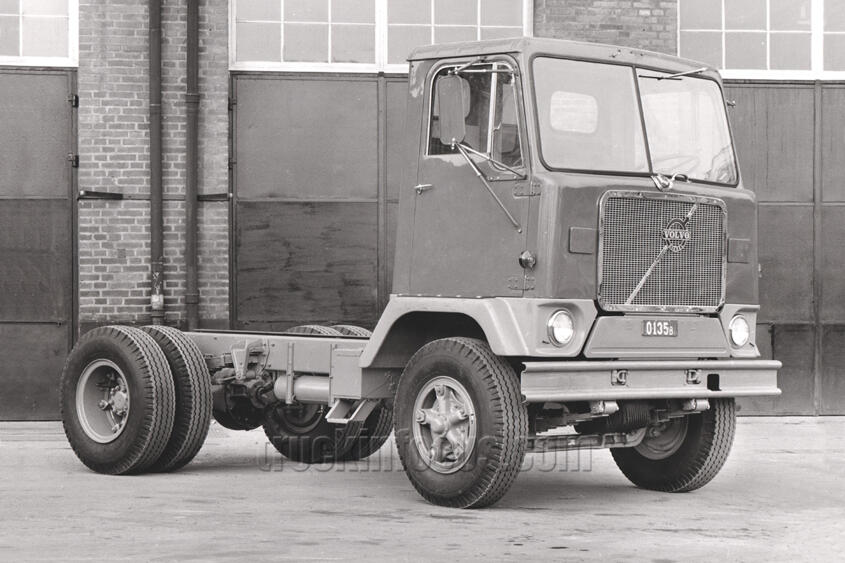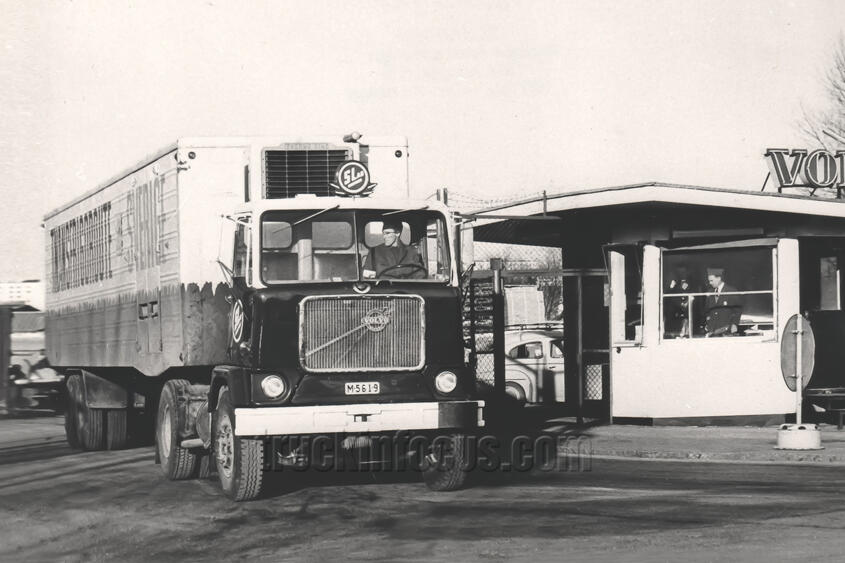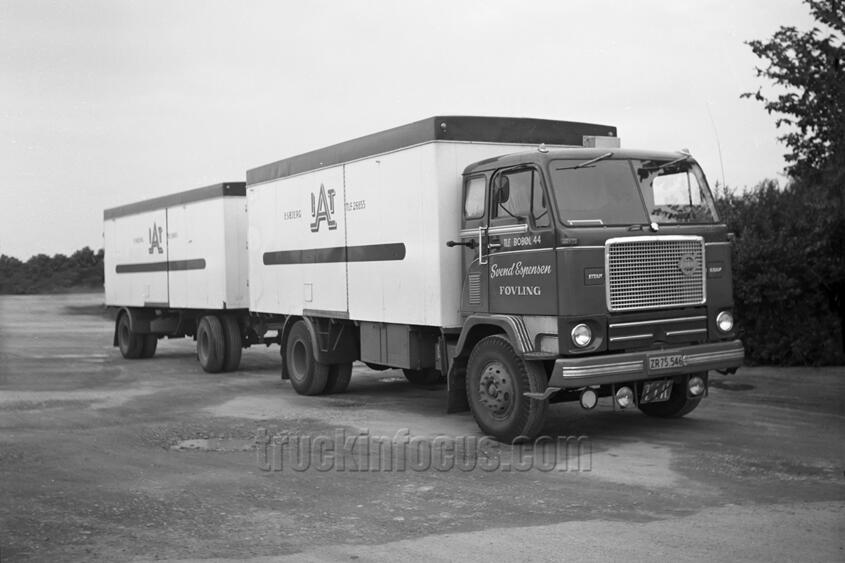The Volvo Chronicle
Page 4
By Christoph Büch (Berlin 2024)
In 1956, designer Helmer Petterson created a modern cab-over-engine model as an all-steel structure, primarily for inner-city deliveries. This cab was also still fixed on the frame. The L 420 Snabbe was designed for a total weight of 5-6 tons, the L 430 Trygge for 8.4 tons. Propulsion was provided by an eight-cylinder gasoline engine with a displacement of 3.6 liters, which produced 120 hp and ran reliably, but consumed considerably more fuel than the diesel engines. Therefore, Volvo bought a four-cylinder, 3.6-liter, 65-horsepower diesel from Ford with torque equivalent to the V-8 gasoline engine, with much lower fuel consumption but less refined running. In the mid-1960s, the Ford engine was replaced by a more powerful Perkins diesel with 80 hp. The Snabbe and Trygge models were produced from 1956 to 1975 with virtually no external changes. Production figures amounted to more than 25,000 units. Then the changeover to vehicles with the club-of-four cab, which will be discussed here, took place in the middle class.
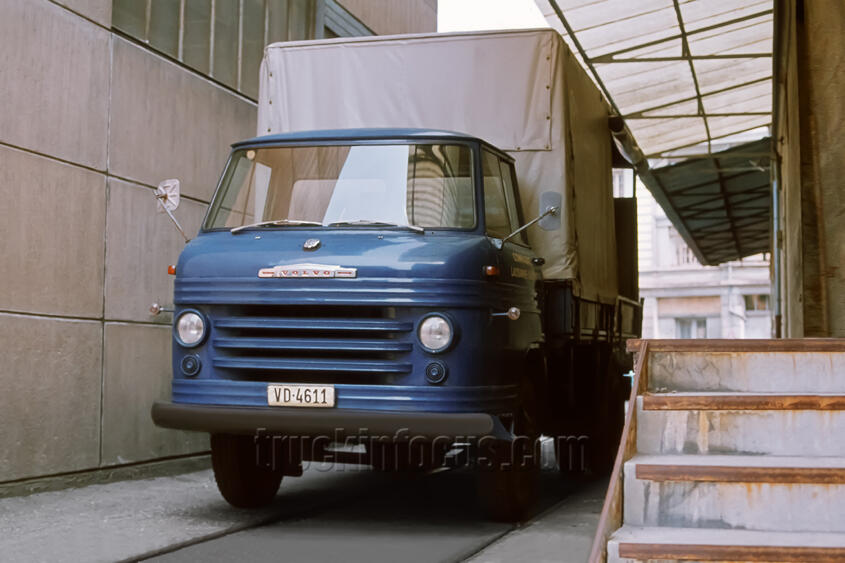
For the Swedish Army, Volvo developed the L 3314/15 Laplander model in the late 1950s, a compact four-wheel-drive truck. By 1970, about 10,000 examples had been produced in various configurations. Engines were gasoline powered with initially 60, later up to 82 hp.
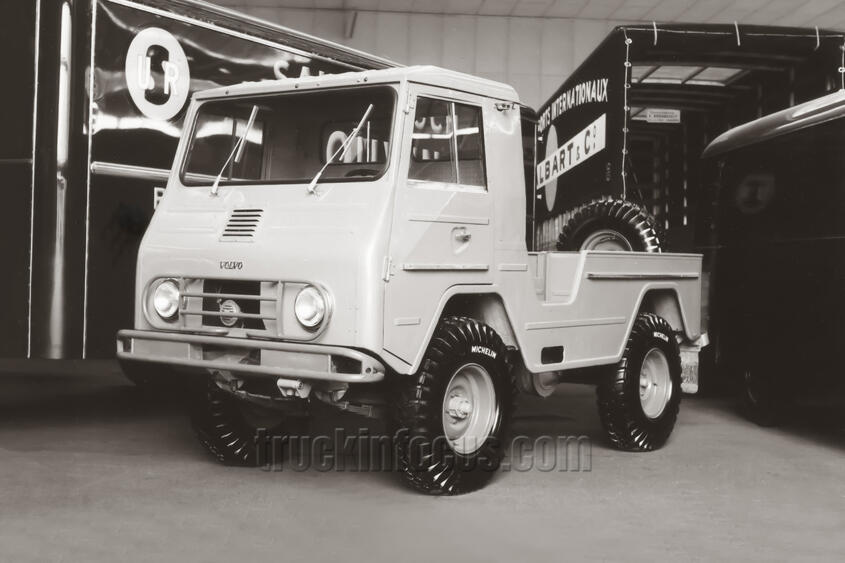
First tilt cabs
In the USA, tilt cabs had long been common, Europe had to wait a long time for this progress. But in 1962, Volvo put itself at the forefront of development throughout Europe with a tilt cab. The new L 4751 and L 4851 models were given the names "Raske TipTop" and "Viking TipTop". With tried-and-tested technology but modern cabs, more than 3498 vehicles of the lighter Raske series and 1078 of the Viking TipTop series were produced by 1964.
Volvo had originally developed the first heavy cab-over with a tilt cab for the USA. In 1964, the L 4951 and L 4956 "Titan TipTop" models were introduced to the Swedish market in 4x2 and 6x2 versions and over 1400 units were produced within two years. This model was the predecessor of the legendary F 88, which soon made Volvo one of the leading manufacturers of heavy road trucks in Europe.
